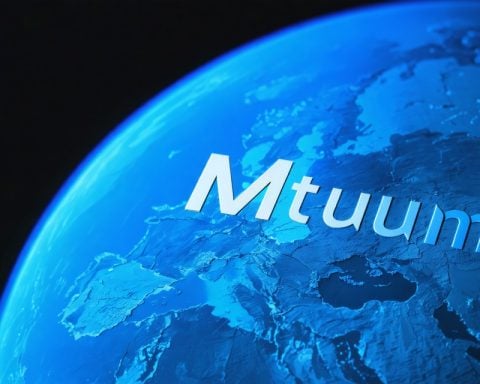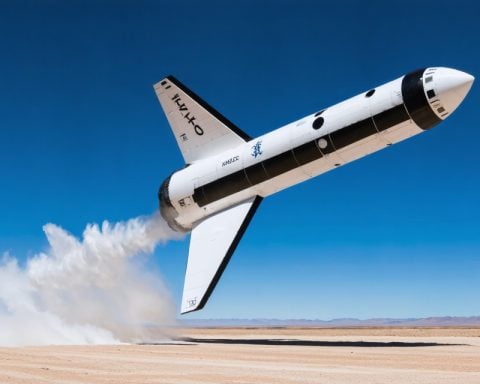- Japan’s Quasi-Zenith Satellite 6 represents a landmark achievement in U.S.-Japan space collaboration.
- It enhances space domain awareness, particularly in geosynchronous orbit monitoring over the Indo-Pacific.
- The satellite will provide near-real-time data to the U.S. Space Surveillance Network, significantly aiding defense efforts.
- This initiative stems from a 2020 agreement, highlighting a deep commitment to joint space modernization.
- The successful launch sets the stage for future collaborative missions, with another payload planned for 2026.
- This partnership exemplifies teamwork in addressing evolving security challenges in space.
In an exciting new chapter for international cooperation, Japan’s Quasi-Zenith Satellite 6 launched successfully from the Tanegashima Space Center, marking a significant milestone in U.S.-Japan space collaboration focused on national security. This mission, the first of its kind, features a U.S. space domain awareness payload that will enhance the understanding of the geosynchronous orbit above the Indo-Pacific.
Operating under the U.S. Space Force’s Space Operations Command, this satellite will provide near-real-time data to the Space Surveillance Network, dramatically improving the U.S. Department of Defense’s capabilities in monitoring space activities. The Quasi-Zenith Satellite System Hosted Payload (QZSS-HP) program represents a strategic partnership between the U.S. and Japan, born from a December 2020 agreement to execute this innovative project.
Over the past two years, teams from both nations meticulously collaborated to integrate and test this revolutionary payload, showcasing a commitment to space modernization and data sharing. As tensions increase in an evolving space environment, this partnership is vital for enhancing defense strategies in the region.
According to U.S. Space Force leaders, this launch isn’t just a success; it’s a promise of more collaborative ventures ahead. The second payload is set for launch in early 2026, ensuring the partnership continues to grow and adapt.
With this historic mission, the U.S. and Japan are setting a new standard for global cooperation in space, reinforcing the critical role of teamwork in safeguarding our future. Stay tuned as these nations pave the way for other groundbreaking initiatives in outer space!
Unlocking the Future: U.S.-Japan Collaboration in Space Defense
Overview of the Quasi-Zenith Satellite 6 Launch
Japan’s Quasi-Zenith Satellite 6 has successfully lifted off from the Tanegashima Space Center. This landmark mission marks the beginning of an unprecedented phase of cooperation in space between the United States and Japan, emphasizing a focus on national security and enhanced space surveillance capabilities.
Key Features of the QZSS-HP Program
The Quasi-Zenith Satellite System Hosted Payload (QZSS-HP) is a significant technological advancement featuring a space domain awareness payload. This payload will enable near-real-time data transmission to the U.S. Space Force’s Space Surveillance Network, allowing for better tracking and monitoring of space activities, particularly in the Indo-Pacific region.
Insights into Collaboration and Future Missions
– Strategic Partnership: This initiative is the result of a joint agreement made in December 2020 between Japan and the U.S., aimed at strengthening space monitoring and defense systems amidst growing tensions in space.
– Projected Enhancements: The successful launch paves the way for future payloads, with the next scheduled for early 2026, aiming to enhance data sharing and operational capabilities further.
Trends and Market Analysis
As global space operations become increasingly crowded and contested, partnerships between nations are expected to rise. The QZSS-HP program sets a precedent for collaborative defense technology developments, which will likely shape future international agreements in space.
Limitations and Challenges
While promising, this partnership faces challenges including:
– Technological integration: Merging U.S. and Japanese technologies and protocols.
– Political dynamics: Navigating the geopolitical landscape, especially in light of rising tensions with other spacefaring nations.
Pricing and Cost Analysis
The budget specifics for the QZSS-HP program have not been publicly disclosed; however, collaborative defense projects often run into the millions of dollars, contingent on technology complexity and the scope of their missions.
Sustainability and Security Aspects
Sustainability in space technology remains a critical concern as both nations emphasize not just security against threats but also responsible usage of orbital environments. Their collaboration will focus on developing sustainable practices that minimize space debris and promote long-term viability of space operations.
Frequently Asked Questions
1. What is the main objective of the QZSS-HP program?
The QZSS-HP program primarily aims to enhance the monitoring capabilities of space activities in the Indo-Pacific region, improving national security across both countries.
2. How will the QZSS-HP payload operate?
The payload will operate as part of the U.S. Space Force’s Space Surveillance Network, providing near-real-time data that helps track and analyze space objects in geosynchronous orbit.
3. When can we expect the next satellite launch?
The next payload in the QZSS program is scheduled for launch in early 2026, continuing the momentum of U.S.-Japan cooperation in space.
For more information on this collaboration and updates on upcoming missions, visit U.S. Space Force and JAXA.









